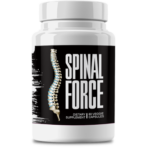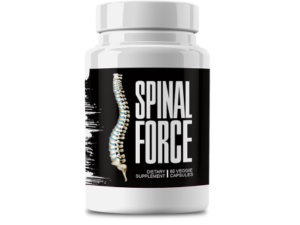This Village-Made Chinese Pain Reliever Eliminates Back And Joint Pain!
The Ultimate Guide to At-Home Shoulder Joint Pain Relief

Getting Started with At-Home Shoulder Pain Relief
Let’s be honest—shoulder pain is a real nuisance that can mess up your day-to-day life in more ways than one. If you’re tired of feeling held back by constant discomfort, you’re in the right place. This guide is packed with down-to-earth tips and expert advice for easing shoulder pain right from your living room. Whether it's just an annoying ache or a more persistent issue, understanding what’s really going on is a key first step toward getting back to feeling like yourself. So, grab a cup of tea, settle in, and let’s dive into some practical techniques that can help you reclaim your mobility and comfort at home.
What Exactly Is Shoulder Pain Relief?
When we talk about shoulder pain relief, we’re not just talking about slapping on a bandage or taking a painkiller and hoping for the best. It’s a holistic approach that targets the root causes of your discomfort. Think gentle exercises, simple lifestyle tweaks, and even natural remedies that can work wonders over time. It’s amazing how something like a few stretches or even a minor ergonomic tweak can make a world of difference. This guide walks you through those strategies in plain language—even if you’re not a medical expert, you’ll feel right at home with these ideas.
What's Causing the Ache?
Ever wonder why your shoulder sometimes feels like it’s carrying the weight of the world? Shoulder pain can pop up for tons of reasons. Maybe it’s from overdoing it at work, bad posture while you’re on your computer, or simply the wear and tear that comes with age. Repetitive tasks, whether in sports or at your job, can also play a big part. And then there are pesky conditions like arthritis or tendonitis that can really make things worse. Knowing these factors not only helps you understand your pain but can also guide you toward smarter, long-term lifestyle choices.
The Upside of Managing It at Home
There’s a lot to love about at-home treatments. For starters, they’re usually easier on your wallet and allow you to work through exercises and routines at your own pace. You get the freedom to experiment with different approaches—be it switching between a hot or cold compress, or trying out targeted stretches. These methods can cut down your pain while improving your joint’s range of motion and overall stability. In short, integrating these steps into your daily routine can transform your healing journey, making it both proactive and personalized, all without stepping out your front door.
How to Evaluate Your Shoulder Pain
Spotting the Signs and Triggers
Self-assessment might sound a bit clinical, but hey, knowing your body is the first step in taking care of it. Have you noticed that your pain flares up after a long day at the computer or following a heavy-lifting session? It might be time to keep a little diary of when the pain hits and how intense it is. Sometimes it’s the small things—a weird sleeping position or a poorly set-up workstation—that can cause major irritation. Keeping track of these details not only helps you understand what’s triggering your discomfort, but also lets you tweak your daily habits before things get worse.
DIY Diagnostic Tools
Believe it or not, you can do a few simple checks at home to see how bad things might really be. A quick mirror check can reveal uneven shoulders or a limited range of motion you hadn’t noticed before. And if you’re into tech, there are nifty smartphone apps designed to track your pain levels and even guide you through flexibility tests. Over time, these little tools can help you see patterns and improvements, making it easier to adjust your routine on the fly. It’s all about getting to know your body a little better—one step, or stretch, at a time.
When to Call in a Pro
While home remedies are fantastic for keeping discomfort in check, sometimes it’s best to throw in the towel and seek professional help. If your shoulder pain becomes worse, if you start noticing alarming signs like numbness or intense swelling, or if your mobility just isn’t what it used to be, it might be time for a chat with a healthcare professional. These could be clues to a deeper problem that requires expert attention. Remember, at-home care is awesome, but it shouldn’t replace proper medical advice when serious symptoms pop up.
Creating a Shoulder-Friendly Lifestyle
Setting Up an Ergonomic Haven at Home
Small changes in your home setup can have a surprisingly big impact on your shoulder health. Ever thought about adjusting your workspace so your monitor is at eye level or swapping out that not-so-supportive chair? These little tweaks can help reduce the strain on your shoulders, not just for a day, but for the long haul. Investing in adjustable furniture might seem like a luxury, yet it can be a game changer when it comes to keeping discomfort at bay. Trust me, sometimes a few minor adjustments around your home can set the stage for lasting relief.
Eating Right for Your Joints
Who knew that what you eat can impact your shoulder comfort? A diet rich in anti-inflammatory goodies like leafy greens, fatty fish, and nuts can do wonders for your joints. Foods packed with omega-3s and antioxidants help calm inflammation and support strong, resilient tissues. And don’t forget to drink plenty of water—it keeps your joints nicely lubricated. Basically, pairing your pain relief routine with a healthy diet is like having a secret weapon against chronic aches.
Daily Routine Changes to Keep Pain at Bay
Sometimes it’s the small, everyday habits that can make a huge difference in keeping shoulder pain under control. Taking regular breaks, maintaining a good posture, and fitting in gentle stretches throughout the day can work wonders over time. A brisk walk or a bit of light exercise can keep your shoulder flexible and reduce stiffness. It’s not just about easing current pain, but also about stopping new discomfort before it starts. Over time, these small habits add up and pave the way for a healthier, more comfortable routine.
Exercises to Target Shoulder Pain
Easy Stretching Routines
Stretching is kind of like giving your shoulder a much-needed break from all its hard work. By incorporating a few focused stretches for your shoulders, neck, and upper back, you can really boost your range of motion and ease tension. Start simple—think of shoulder rolls or some gentle arm circles—and let your body warm up gradually. Just go easy and don’t push too far; your goal isn’t to break a sweat but to give those muscles a friendly nudge in the right direction.
Building Strength for a Stronger Shoulder
Besides stretching, building up the muscles around your shoulder is crucial. Simple exercises like resistance band workouts or light weight training can help fortify the rotator cuff and other supporting muscles. And here’s a friendly tip: listen to your body. It’s better to focus on quality and control rather than trying to do too much too soon. Over time, these gentle exercises can reinforce your shoulder’s stability and lower the risk of injuries, helping you feel robust and more confident in your movements.
The Perfect Blend: Flexibility and Strength
Achieving lasting shoulder relief means balancing flexibility with strength. Incorporate dynamic stretches along with your regular routines—think yoga or Pilates—to cultivate a supple and strong shoulder. It’s a bit like having your cake and eating it too; you get the benefit of both enhanced mobility and muscle support. The key here is consistency. A blend of regular stretching and strengthening will help keep your shoulder in top form, even as daily demands pile up.
Natural Remedies to Ease Shoulder Pain
Switching Between Heat and Cold
Ever tried alternating between a heat pack and a cold compress? This simple approach can be surprisingly effective. Cold therapy is great right after you’ve strained your shoulder—it reduces inflammation and numbs sharp pain almost instantly. On the flip side, heat can relax tight muscles and promote healthy blood flow when your shoulder just feels stiff. Experiment a little until you find your sweet spot. Pro tip: switching between the two might just give you that perfect balance that your shoulder needs to start feeling better.
Essential Oils and Herbal Helpers
Natural remedies are making a comeback, and with good reason! Essential oils like lavender, peppermint, and eucalyptus are more than just pleasing scents—they have anti-inflammatory and pain-relieving properties that many find helpful. Mix a few drops with a carrier oil and gently massage the area for a bit of soothing relief. Complement these with herbal supplements like turmeric or ginger (which, by the way, aren’t just great in your tea!) to support joint health naturally. While these won’t replace traditional treatments, they can definitely serve as a nice bonus in your overall routine.
Over-the-Counter Aids
Sometimes, having a little extra support from over-the-counter products can really help. Whether it’s an anti-inflammatory cream or a supportive brace, these tools are handy for providing short-term relief while you work on building lasting strength and flexibility. Just make sure to read the labels and, if you’re ever in doubt, have a quick chat with your pharmacist. These aids are designed to plug into your broader recovery plan, offering an extra layer of comfort during those tough days.
When Professional Help Might Be Needed
Red Flags to Watch Out For
No matter how dedicated you are to your at-home routine, there are times when professional help is a must. If your shoulder pain is getting worse despite your best efforts, or if you start experiencing issues like sudden swelling, numbness, or a dramatic drop in mobility, don’t ignore it. These could be warning signs that something more serious is going on. Catching these red flags early can prevent long-term problems and help ensure you get the targeted treatment you need.
Mixing Home Care with Clinical Treatments
Often, the best recovery plan involves a smart mix of at-home care and professional guidance. While daily exercises and ergonomic adjustments work wonders for managing pain, regular check-ins with a physical therapist or doctor can fine-tune your efforts. They might introduce you to advanced techniques or tailor your routine as your needs evolve. This collaboration between self-care and clinical expertise typically leads to the most effective outcomes—and it’s a great way to feel confident that you’re on the right track.
Your Personalized Shoulder Pain Relief Plan
Setting Achievable Goals
Building your perfect at-home shoulder pain relief plan starts with setting realistic goals. Don’t expect miracles overnight—healing is a journey with lots of small victories along the way. Maybe your goal is simply to add a few more degrees of movement or to cut back on painkillers gradually. Keeping your expectations in check can help reduce stress and makes the process much more manageable. Remember, every little improvement is a sign that you’re moving in the right direction.
Keeping Track of Your Progress
One thing I’ve found really helpful is keeping a little log of my progress—whether it’s in a notebook or a handy app. Jotting down how your shoulder feels, what activities you did, or even how a particular exercise affected you can offer great insights over time. This way, you can see patterns in what’s working and what might need a tweak. Tracking your progress not only boosts your morale but also lets you make smart decisions as you fine-tune your routine. It’s all about keeping your finger on the pulse of your recovery.
To wrap things up, remember that finding the right shoulder pain relief strategy isn’t one-size-fits-all. With a mix of self-assessment, lifestyle adjustments, targeted exercises, and a dash of natural remedies, you can design a personalized plan that truly addresses your needs. Trust in the process, be patient with yourself, and celebrate every little improvement along the way. Here’s to a future with fewer aches and more freedom to live life to the fullest!








